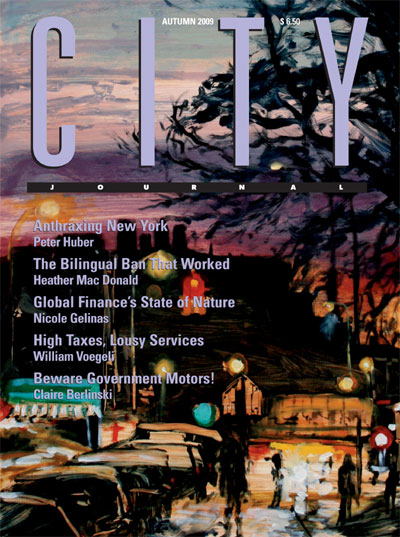The ongoing frenzy over Mad Men, which recently landed the Emmy for best drama series for the second straight year, has me thinking about my father-in-law and his group of cronies in Monterey, California. I wrote a book about these guys some years back, called The Girl Watchers Club. For over 30 years, they got together every week to shoot the breeze about their jobs, their families, and the world at large and, invariably, to reminisce about the war in which they’d all served. Though they were perhaps a few years older than the sharks who populate Mad Men’s Sterling Cooper Ad Agency—as every devotee of the show knows, lead character Don Draper’s war was Korea, not World War II—the era in which the show is set was their time also, the period when they were most fully involved in nurturing their careers and raising their young families and otherwise building an America very different from the one we know today. And though the creators of Mad Men are obsessed with period accuracy—so much so, according to Vanity Fair, that even the books on Draper’s office shelves match the time—for many of us who recall those recent yet oddly unfamiliar days, the show gets some of the biggest things all wrong.
No mystery there, since in its depiction of the fifties and early sixties, Mad Men faithfully reflects the dominant liberal view of that era as a time of rampant materialism, spiritless conformity, and reflexive bigotry. The corollary is that we were redeemed—liberated—not just by the civil rights movement but by the antiwar, feminist, and sexual-liberation crusades that followed. So ubiquitous is this view that its adherents can scarcely mention Ozzie and Harriet, Father Knows Best, or Leave It to Beaver, even in print, without sneering. Almost any graduate of today’s public schools will tell you, and plenty of their aging antiwar moms and dads will agree, that their grandparents were racist, sexist, and shockingly homophobic, and that’s before you even get to the hypocrisy that characterized their interpersonal relations.
Finally, a reason to check your email.
Sign up for our free newsletter today.
In this view, needless to say, we are so much better than all that today. As New York Times op-ed columnist Timothy Egan summed it up in his paean to Mad Men, the half-century from then to now has been a steady “march toward a more tolerant, equitable, less socially inauthentic society.” And sure, there is plenty of basis for that judgment. My father-in-law, Moe Turner, used to beat himself up over how, growing up in Arkansas under the American version of apartheid, he’d been so blind to the evil playing out daily before his eyes. Nor can excuses be made for any number of other social attitudes that prevailed back then. But what Moe and his buddies also understood was how much about that despised time was good and worthy, and how much we have lost with its passing.
Start with family life. Back then, under 8 percent of American children were born out of wedlock annually. Today, that figure is close to 40 percent overall and fully 70 percent in the black community—which, for all the other hardships it faced 50 years ago, saw only 20 percent of black kids born to a single mother. Then, too, the divorce rate has more than quadrupled since 1960, today standing in the vicinity of 50 percent.
Of course, for many liberals, the low divorce rates of old are just more evidence of that era’s hypocrisy. One iconic scene in Mad Men has serial adulterer Draper watching Leave It to Beaver with the kids while his wife gets some payback with a pickup in a bar bathroom. But the Girl Watchers, all of them long married, would tell you that sticking through the tough times wasn’t just what you did back then; it was the essence of the thing, what made it work. And, yes, if it came to that, people often did stay together for the children, and there was honor in that also. It’s no accident that the term “latchkey kid” was not coined until decades later.
In fact, we kids growing up in the fifties were better off in all sorts of ways. Mad Men has lots of fun showing the Drapers heedlessly clouding their children in secondhand smoke and letting them run around in dry-cleaner cellophane. But in that less fearful and blissfully P.C.-free age, we also learned independence and resilience by roaming the neighborhood unsupervised and playing dodgeball at recess. And though it’s hard to imagine in a time when eight-year-olds are robbed of innocence by everything from Miley Cyrus to the smutty double entendres of Two and a Half Men, our TV shows—Wagon Train and, yes, Beaver—offered lessons in bravery, honesty, and doing the right thing. In school, our teachers and history texts stressed America’s founding ideals and the remarkable individuals who’d struggled to bring them to life, and we came of age with a straightforward, uncynical love of country wholly alien to children today. (My friends and I used to take particular pride in the fact that the U.S. had never lost a war—the War of 1812 and the Korean War counted as ties.) But how could it be otherwise, when our parents, the Greatest-Generation-to-be, felt the same way?
For the Girl Watchers, the loss of national faith during the Vietnam War was a source of both confusion and regret. “There was perfectly good reason to dislike the war,” a crusty old guy named Boyd Huff said of this most alarming change of all. “What I could never understand was . . . how so many young people could doubt the fundamental goodness of the country.”
